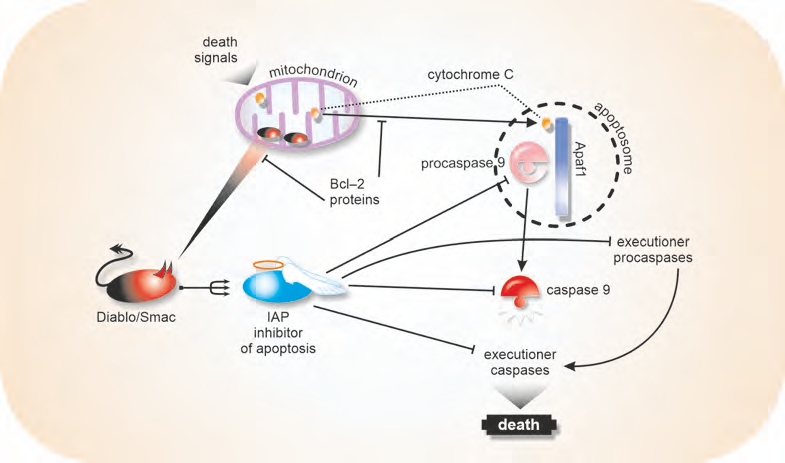It may sound surprising, but not only the birth of a cell through division, but also its death and dying in multicellular organisms follows a perfect and pre-formed plan. Therefore, this type of death is called „programmed“ cell death, and its best known and probably most widespread form is apoptosis. Chapter four describes the molecular mechanism of apoptosis and evaluates its importance for the health of a multicellular organism, including its protection against tumor formation.
The life of every living being is limited in time, and the bodies of multicellular organisms consist of cells whose viability is restricted. The different cell types differ in their lifespan. For example, as you learned in the first paragraph of this chapter, billions of cells die every hour in the bone marrow and intestines of a healthy adult human. This is not an accidental death forced by conditions incompatible with life. In this and many other cases, it is a conscious, purposeful death that is useful for a higher system, namely the organism. In fact, the life of some of its units – cells that are replaced by new, younger and more efficient ones – is sacrificed for the quality of life and health of the organism. Apoptosis, the opposite of excessive cell proliferation, aims to maintain the stability of the internal milieu and is therefore a natural part of the homeostasis of a healthy organism. Tumor cells are characterized by their reluctance to die. They prolong their life by damaging the mechanisms that ensure early cell death. However, this is a short-sighted strategy. The absence of physiological death in tumor cells and their constant proliferation exhausts and damages the body to such an extent that it leads to its premature death. And with the death of the organism, all the cells that make it up also die. Innocent, non-cancerous cells as well as cancerous cells that long for immortality.
In this chapter you will learn many interesting facts about the biological nature of apoptosis, when, how and why it occurs and the means by which a healthy system can regulate it so that cell death serves the life of its multicellular host. This is logically followed by an explanation of the consequences of damage to the mechanisms of programmed cell death for the life of the organism and the risks of cancer.


The second part of the chapter four will make you think more deeply about human death and our attitude and relationship to it. It deals with the questions of whether we calmly perceive death as a natural part of life, whether we understand its significance, whether we accept it with humility or whether we unconsciously avoid the subject of death, repress any thought of the finiteness of our own life and the life of our loved ones and, when it approaches, struggle with it as our greatest enemy. The author introduces you to the ideas and concepts of „dying well“ from Elisabeth Kȕbler-Ross and other recognized experts in the field, and reminds you of the message Steve Jobs left us with his untimely death.
This chapter is extraordinary and captivating for its universal theme, depth, richness and inspiring ideas. Death awaits each of us.






